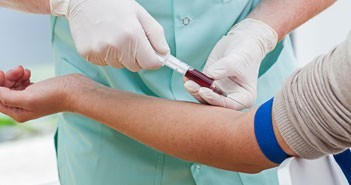Interview with Shane Needham (Alturas Alturas Analytics) on the future of DBS

 What led to your interest in dried blood spots (DBS)?
What led to your interest in dried blood spots (DBS)?
Our interest in DBS arose from some of the challenges associated with the analysis of non-blood matrices such as CSF, synovial fluid and urine. Often these matrices can be of limited volume and/or other challenges such as non-specific binding or stability are of a nature that conventional collection and analysis techniques are not successful. For this reason, we developed the technique, dried matrix spotting (DMS) for the analysis of these colorless fluids.
What were you hoping to find out from this survey?
From this survey, I was hoping to gain insights into the overall application of DBS in the industry. As scientists, we often gauge the potential use of a technique from how others are applying it. Therefore to have a survey that shows there are laboratories using DBS for discovery, toxicokinetic, Phase I-IV and clinical laboratory applications should be very encouraging to the scientific community.
Which results from the survey did you find most surprising?
Several positive results from this survey encourage me. One being that with the negative press from select groups in the industry about regulators holding back DBS technology, many other groups feel that regulators are not necessarily the main issue in not moving DBS forward at a faster pace. Another surprising result from this survey for me is that there are not more responses for DBS application from EU countries, considering their focus on the 3Rs.
Which results do you think are the most significant/interesting?
I think the most significant result from the survey is that the scientific community is still open to exploring DBS. The development of DBS in Pharma has led the industry to change their mindset and think more about microsampling including, capillary glass sampling, wet methods, direct ionization methods, etc. Microsampling in every form has tremendous benefits for the industry. I think that without the initial triumphs and trials of DBS that this microsampling discussion may have been delayed significantly.
Taking into account these survey results, what is your prediction for the future of DBS?
I think DBS will have a role in the future of drug development as an alternative technique to conventional sampling. Like all technologies in the development (non-mature) life cycle, the DBS/DMS technique is truly fit-for-purpose and we will continue to see applications of DBS in drug development. For the future, as we are expected to deliver therapeutics to patients more efficiently, I think too that DBS will play a huge role in personalized medicine and at home sampling applications to minimize costly clinical visits.






